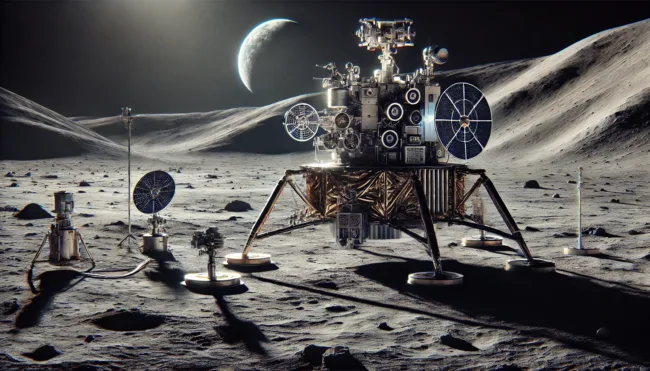NASA awards Intuitive Machines $116.9m contract for lunar mission
NASA has awarded Intuitive Machines, Inc. (Nasdaq: LUNR, LUNRW) a notable $116.9 million contract to advance lunar exploration by deploying six advanced scientific and technological payloads to the Moon’s South Pole. This substantial contract emphasizes NASA’s ongoing commitment to the Artemis program and the broader Commercial Lunar Payload Services (CLPS) initiative. Intuitive Machines will utilize its expertise in lunar delivery systems, data transmission, and autonomous operations to support this mission, focusing on the South Pole’s potential for sustained human activities.
The award highlights a significant step in NASA’s lunar exploration strategy, with Steve Altemus, CEO of Intuitive Machines, expressing enthusiasm about the partnership. Altemus noted, “Over the last several years, we’ve witnessed NASA’s successful Artemis I mission and the campaign’s progress toward sustainably returning humans to the surface of the Moon. This underscores the importance of autonomous missions that advance our understanding of the Moon and the commercial services needed to support this industry. We are excited to work closely with NASA to deliver mission success once again.”

As part of this contract, Intuitive Machines will deliver a suite of advanced payloads designed to enhance scientific knowledge and explore lunar resources. The Lunar Explorer Instrument for Space Biology Applications (LEIA) will be managed by NASA’s Ames Research Center and will transport yeast to the lunar surface. This experiment aims to study how lunar gravity and radiation affect biological organisms, offering insights into potential adaptations for life in space environments.
The Package for Resource Observation and In-Situ Prospecting for Exploration, Characterization, and Testing (PROSPECT) is led by the European Space Agency and consists of a suite of instruments designed to extract samples from beneath the lunar surface. This mission seeks to identify volatiles such as water, ice, or gases trapped in the Moon’s regolith, which could be crucial for future lunar exploration and resource utilization.
Another critical payload is the Laser Retroreflector Array (LRA), managed by NASA’s Goddard Space Flight Center. The LRA will feature eight retroreflectors that enable precise laser measurements between the spacecraft and the lander, serving as a permanent marker on the Moon for long-term distance measurements and lunar navigation.
The Surface Exosphere Alterations by Landers (SEAL) experiment, also managed by NASA’s Goddard Space Flight Center, will investigate the chemical and physical responses of lunar regolith to disturbances caused by spacecraft landings. This study aims to understand how landing activities might alter the composition of lunar samples and the surrounding environment.
Additionally, the Fluxgate Magnetometer (MAG) will measure magnetic fields at the lunar surface, contributing valuable data on energy and particle pathways. Managed by NASA’s Goddard Space Flight Center, MAG will enhance our understanding of the Moon’s magnetic environment.
The Lunar Compact Infrared Imaging System (L-CIRiS), managed by the Laboratory for Atmospheric and Space Physics at the University of Colorado at Boulder, will deploy a radiometer to measure infrared wavelengths. This system will map the Moon’s surface temperature and composition, demonstrating the feasibility of using infrared technology for future lunar missions and resource extraction.
Intuitive Machines is currently in the final assembly phase of its second lunar mission, with delivery to the launch facility scheduled for late 2024. Simultaneously, the company is advancing its third lunar mission, focusing on systems integration and testing. This continued commitment to lunar exploration underscores Intuitive Machines’ pivotal role in the future of space exploration.
Discover more from Business-News-Today.com
Subscribe to get the latest posts sent to your email.